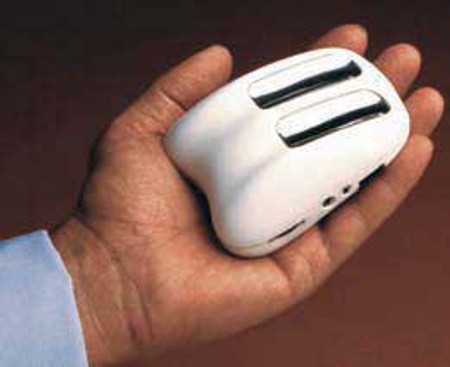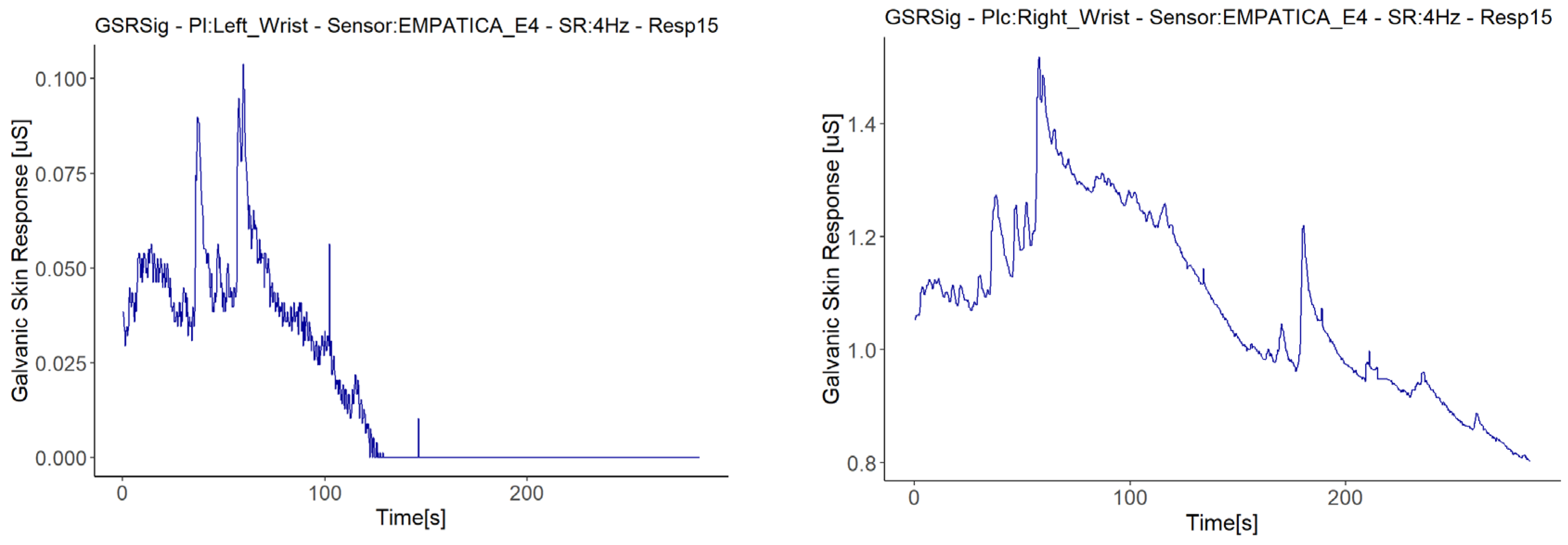

- #Galvanic skin response measurement device serial#
- #Galvanic skin response measurement device manual#
These changes can be further studied and categorized.
#Galvanic skin response measurement device serial#
These newer values are compared with the threshold and, if they’re different, a conductance message is sent as output via Arduino’s serial monitor. In the loop function, the subsequent skin/sweat values are acquired. their sweat levels), it’s necessary to declare a dedicated “ ThresholdValue ” function.įor this function, an average of 100 skin conductance samples is calculated and set as the typical threshold value.

Then, to acquire the typical or “normal” conductance value of a person’s skin (i.e. In the project code, we first initialized Arduino’s serial monitor, starting it at 9600bps. The electrodes are plugged into a jack connector. As mentioned, Arduino’s regulator output (of 5v) is powering the sensor module. For this project, we’re powering it will 5v of Arduino’s output.Īrduino’s analog pin #2 must be connected to the sensor’s output pin. This sensor is compatible with 5v and 3.3v tolerance. The sensor will output an analog signal that corresponds to the person’s skin conductance. The sensitivity of the module is adjustable using an onboard potentiometer. Electrodes are attached to a wearable piece of cloth, which fits around a person’s finger. For this tutorial, we decided to use Seeed Studio’s GSR sensor module. Nevertheless, this is an interesting do-it-yourself (DIY) project to experiment with. So, results should be evaluated with this in mind. For example, even a slight deviation in the electrodes could result in error spikes or malfunction. One of the most common applications for such skin-response sensors is a lie-detector test.Īlthough this technology has proven capable of detecting stress - which might be attributed to a person being deceptive or lying - there can be challenges in fine-tuning the sensor for a precise reading. This sudden elevation in sweat can be picked up and recorded by the electrodes of a GSR sensor for further interpretation. When in a reactive or stressed state, the human body’s sweat glands are activated.
#Galvanic skin response measurement device manual#
Which location should you choose for your recording?įor more information see Shimmer User Manual and Pocked Guide – Galvanic Skin Response.Īlso see Consensys – GSR software for information about the software.A galvanic skin-response (GSR) sensor is used to measure the stress levels or emotional spikes in people it’s reading by using two special electrodes. Particularly, the palms of the hands, fingers and foot soles are sensitive recording sites. While sweat glands are present in almost all parts of the body, certain areas respond more strongly to emotional stimulation. Report the associated skin conductanceĪlthough GSR data might be acquired with arbitrary sampling rates (up to 2000 Hz), very low sampling rates are sufficient. We suggest sampling rates from 1 to 10 Hz, however, keep in mind that higher sampling rates might be necessary if the same device collects GSR and other physiological parameters such as (optical) heart rate, for example. Measure the electrical current between the two electrodesĤ.

Place two electrodes on emotionally sensitive body locationsģ. With GSR, the impact of any emotionally arousing content, product or service can be tested – actual physical objects, videos, images, sounds, odors, food probes and other sensory stimuli as well as thought experiments and mental images.ġ. Exactly this circumstance renders GSR the perfect marker for emotional arousal as it offers undiluted insights into physiological and psychological processes of a person. We simply cannot consciously control the level of skin conductivity. Skin conductivity is solely modulated by autonomic sympathetic activity that drives bodily processes, cognitive and emotional states as well as cognition on an entirely subconscious level. With GSR, you can tap into unconscious behavior that is not under cognitive control. What makes GSR such a valuable biometric signal in assessing emotional behavior? No matter whether we are stressed, nervous, fearful, psyched up, stoked,īaffled, or surprised – whenever we are emotionally aroused, the electrical conductivity of our skin subtly changes. One of the most sensitive measures of emotional arousal is Galvanic Skin Response ( GSR), also referred to as Electrodermal Activity ( EDA) or Skin Conductance ( SC). The devices which measure a galvanic skin response are often referred to as feedback instruments, in part because of how this response is generated or detected. Our skin reveals a lot of information on how we feel when we are exposed to emotionally loaded images, videos, events, or other kinds of stimuli – both positive (“aww, how cute!”) and negative (“yikes!”). Twente Intervention and Interaction Machine (TIIM).Equipment and facility reservation schedule.Brain Computer Interfacing (BCI) Testbed.


 0 kommentar(er)
0 kommentar(er)
